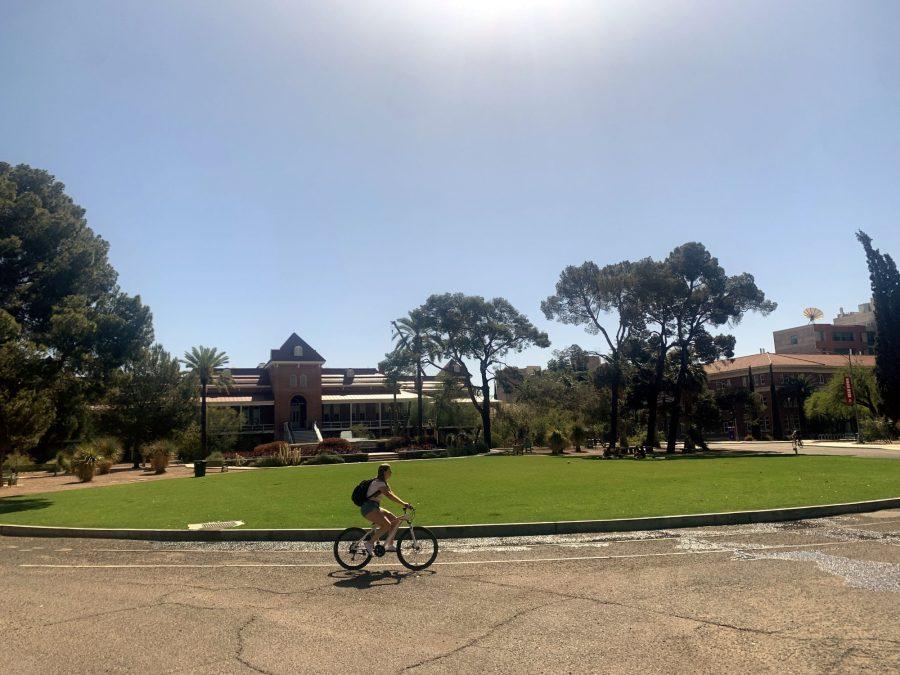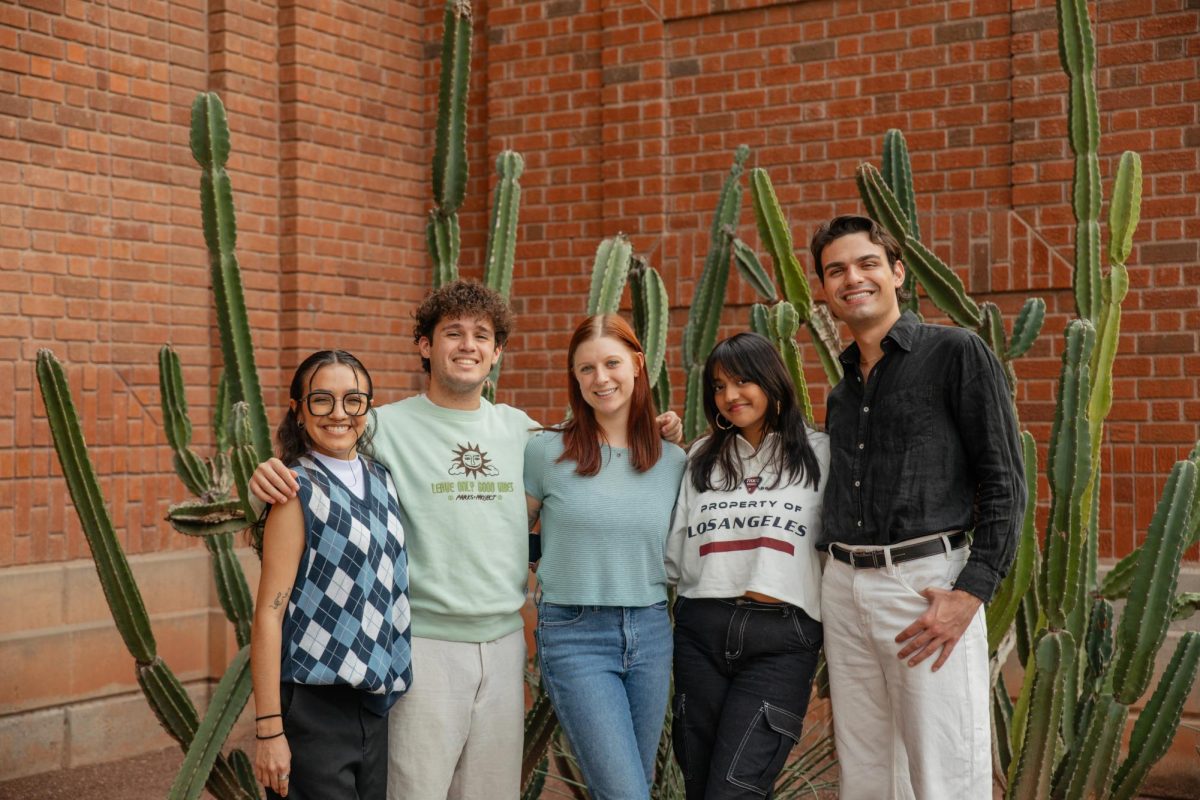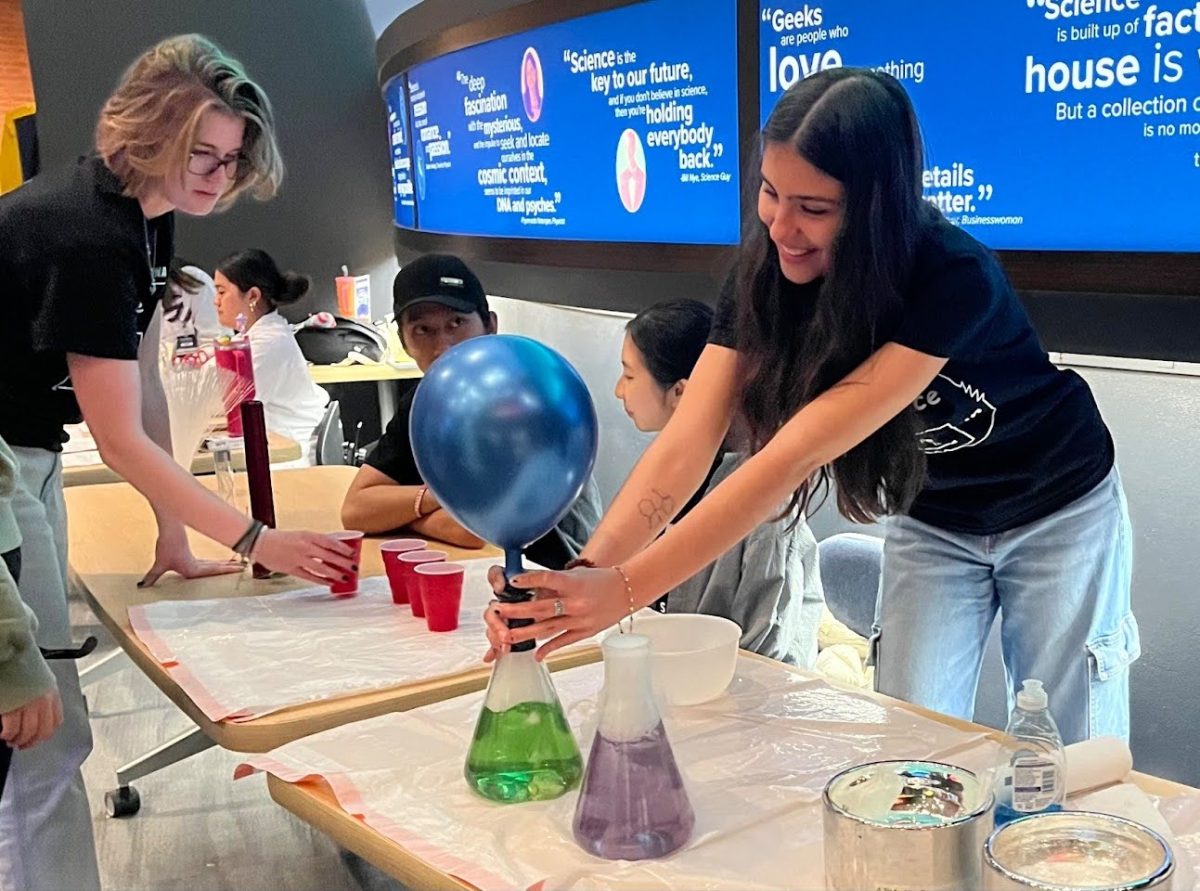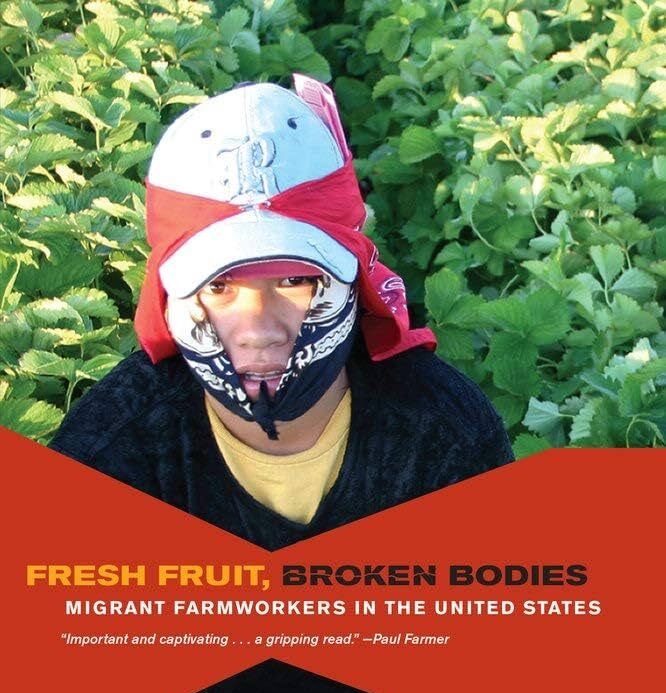University of Arizona freshman Sydney Schumer realized she was out of her element as she desperately dug through her suitcase during move-in at the Coronado Residence Hall last fall to fish out a tank top.
“As soon as I stepped out of my dorm the first time, I realized I actually couldn’t take it,” she said.
Like countless other ill-informed freshmen and their families, Schumer learned the hard way just how intense the Tucson sun is. Over the course of the past seven months, she’s had around 10 sunburns, the worst of which came from her sorority philanthropy event on a cloudy day.
Many UA students aren’t accustomed to the desert sun, which will begin to ramp up in intensity as warmer temperatures take over in the next couple of weeks. With the right precautions, students can protect themselves and their skin despite the nature of consistent sun exposure that being a college student can pose.
Sun danger is more than just putting your skin at risk when laying out to tan. Walking to class, sitting on the Illegal Pete’s patio for lunch, driving without tinted windows – there are countless ways to expose your skin to the sun without realizing.
Lee Ann Hamilton, assistant director of Health Promotion & Preventative Services at UA Campus Health, said the risk of skin cancer or sun damage has less to do with where you’re from and more to do with the color of your skin.
The Arizona Department of Health Services reported a significantly higher rate of invasive melanoma rates in white non-Hispanics than any other race or ethnicity. People who are fairer skinned are more likely to burn, which can trigger skin cancer, while people of color have more melanin to protect their skin. But even those with darker complexions who don’t burn as easily are still at risk of skin cancer if they’re not careful, Hamilton said.
Arizonans might brag about being “used” to the heat, but heat really has nothing to do with sun damage. You can get just as sunburned on a cloudy day as a sunny one if the UV is right.
The AIM at Melanoma Foundation advises that, although most people can be outside or up to an hour without harm when the UV index is two or under during peak sun, those with sensitive skin should still protect themselves. When the UV is higher than two, however, fair-skinned people can burn within 20 minutes or less without sun protection.
Lighter eyes and less pigment in the skin means you’re at a higher risk, whether you’re from the Olympic Peninsula or you’ve lived in Tucson your entire life.
The only exception to the location rule is that higher elevation, like on a mountain, increases the intensity of UV rays, so spending the day skiing with bright, reflective snow or taking an afternoon at a mountain lake significantly increases your chance of getting a sunburn.
The most important thing to avoid is getting a sunburn, Hamilton said. Sunburns can trigger genetic damage and sun damage is cumulative, so the more you get burned, the more damage you’re doing to your skin.
One sunburn target that is often overlooked is your hands, Hamilton said. It’s important to protect the hands, which are nearly always exposed, just as much as your face.
The best way to keep your skin safe is to follow the Skin Cancer Institute’s rule of thumb: be an ACE — Avoid UV rays, Cover-up, Examine your skin.
Avoiding UV rays is difficult in bright, sunny Tucson, but one sure-fire way is to limit tanning — something that Hamilton and other skincare experts do not recommend.
Schumer occasionally tans for an hour or two at the UA Student Recreation Center pool, she said, and so does her sorority sister, Peyton Coleman.
Coleman has been at the UA for three years and learned the hard way that she can’t tan in Arizona nearly as long as she can at home in the Pacific Northwest. She said she avoids the sun as much as possible when the UV is high.
“I run from shady area to shady area here, tree to tree – that’s a skill that I didn’t know I needed here,” Coleman said.
Tanning can cause serious skin damage. In the past, those looking to get a golden glow for the summer would use baby oil to fry their skin in the sun, Hamilton said. Though SPF is more common now, it’s still dangerous to spend excessive time in the sun, especially without at least SPF 30 between your skin and the UV rays.
“A tan is a sign of damage. The skin is responding to the sunlight and trying to protect itself,” Hamilton said. “A safe tan is an oxymoron.”
RELATED: OPINION: Let women be women
Skin cancer is the most common cancer in the U.S., according to the Arizona Skin Cancer Institute, and Arizona’s invasive melanoma age-adjusted rates went up 36% between 2014 and 2018. Age-adjusted rates adjust the sample population’s ages to reflect that of the standard population – meaning that proportionally more and more people are getting diagnosed with invasive melanoma.
Non-melanoma skin cancer rates are harder to report, according to the institute’s website, because they’re not required to be reported, but data shows that melanoma rates have increased and do continue to put Arizonans at risk.
Because sun damage is cumulative, there’s nothing that can be done for the damage in the past. However, students can protect their skin while they’re still young to prevent any future damage or skin cancer.
Beyond using SPF, students can follow the Skin Cancer Institute’s second rule: cover up. Hamilton and the Institute both recommend wearing long sleeves and hats when possible, especially when you know you’ll be out in the sun for a while.
The warmer climate in Arizona means more time is spent outside year-round in short sleeves, according to the institute, so it’s imperative to protect the skin as much as possible to avoid the risk of accumulating extra harmful sun exposure.
Hamilton encourages students to examine their skin. Though students are typically in the age range that is not at risk of finding skin spots, it’s still important to check for irregular spots that change shape, size or color, and to have them checked out if they’re ever unsure.
Skin cancer runs in families and is often found in people who spent a lot of time outdoors in their youth, according to Hamilton. Though it’s the most common form of skin cancer, it’s also the most preventable.
“If there’s one thing I could say to students, it’s to protect your skin so you don’t get burned,” Hamilton said.
*El Inde Arizona is a news service of the University of Arizona School of Journalism.
Follow the Daily Wildcat on Twitter









